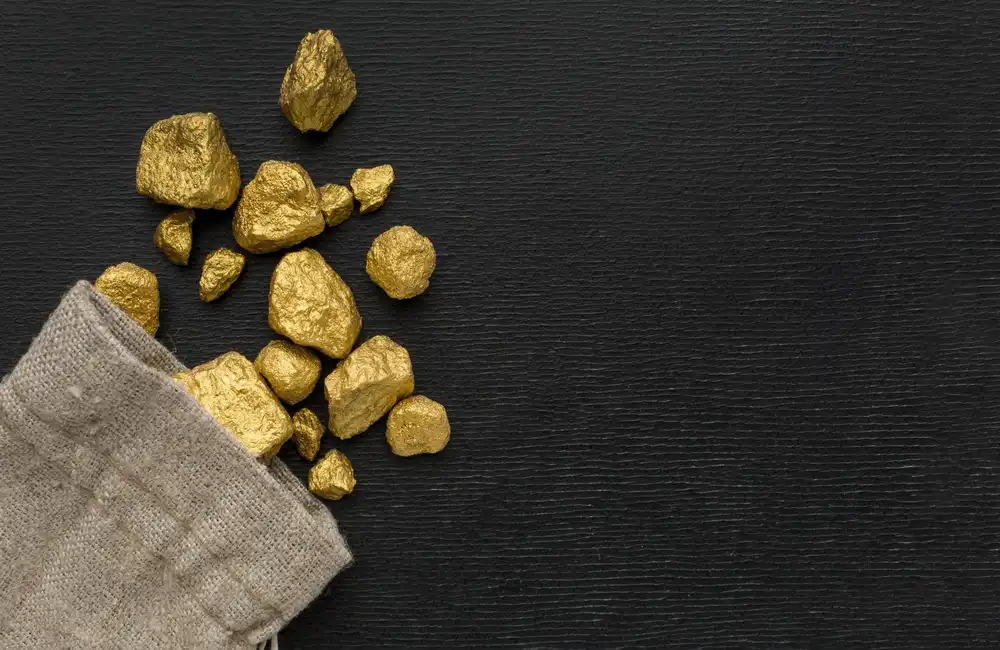To protect wealth for future generations investors need to understand how commodities function within a diversified investment portfolio.
Despite being frequently ignored by new investors, commodities stand as a dependable asset class that has provided protection from inflation and economic uncertainty for hundreds of years. Your long-term strategy should include commodities because they offer enduring value.
Understanding Commodities as an Asset Class
What Are Commodities?
Physical goods which contain inherent value fall into the category of commodities. These include:
- The category of precious metals consists of gold, silver, and platinum.
- Energy resources like oil and natural gas.
- Agricultural products including wheat, coffee, and soybeans.
- Industrial metals like copper, zinc, and aluminium.
Commodities differ from stocks because they represent tangible assets rather than ownership stakes in companies, and from bonds because they are physical goods rather than loans to institutions or governments. Their physical form protects commodities from business failures and stock market swings.
Why Invest in Commodities?
During periods of economic instability, investors frequently shift their focus to commodities. Commodity values generally fluctuate separately from traditional market trends, and this independence allows them to serve as a protective measure when stock and bond markets experience downturns. Commodities function as protection from numerous economic dangers and transform into secure wealth storage options during unstable periods.
Commodities as a Hedge Against Inflation
The purchasing power of cash and paper-based assets diminishes during inflationary periods, while commodities typically retain their value throughout such times.
How Commodities Retain Purchasing Power
Commodity values tend to rise when prices increase. For instance:
- Investors regard gold and silver as inflation-proof assets due to their intrinsic value and their similarity to currency properties.
- Global demand for oil and energy resources usually drives their prices upward during inflationary periods.
Case Studies
Commodities have shown better performance than fiat currencies during times of high inflation. For example:
- Throughout the 1970s stagflation period, gold prices rose dramatically, which benefited those who invested in it.
- Gold prices increased significantly during the 2008 financial crisis, which strengthened its status as an investment for security.
- Gold and other commodities serve as stable reserve assets for central banks and institutional investors because they provide long-term security.
The Role of Commodities in Wealth Preservation
The purpose of wealth preservation involves sustaining asset value over time, and commodities fulfill this purpose through multiple important aspects.
Tangible Security
Gold and silver are commodities that exist physically and are immune to devaluation because they cannot be produced by policy decisions, unlike stocks and fiat currencies. Commodities act as protective investments against risks from currency depreciation and international political uncertainties.
Diversification and Risk Reduction
The movement of commodities in the opposite direction to traditional asset classes enables them to serve as an optimal tool for portfolio balancing. Investors who add commodities to their portfolios experience lower volatility and better capital protection during economic downturns.
Historically Reliable
- Gold has served as both a significant emblem and a secure form of wealth preservation for more than 5,000 years.
- Agricultural products and industrial metals have maintained their fundamental importance for global economies over time.
How Commodities Perform During Economic Crises
The worth of commodities becomes evident during times of market slumps and geopolitical unrest.
Counter-Cyclical Performance
During economic crises, commodities usually perform well because essential goods such as energy and food maintain stable demand or experience increased demand. For example:
- Supply concerns during geopolitical tensions typically result in rising oil prices.
- Investors typically find precious metals such as gold more appealing when they seek stability away from turbulent markets.
Resilience in Disruptions
Commodity prices rise when supply chains face disruptions from events such as pandemics or natural disasters, which strengthens their protective asset value during economic challenges.
The Best Commodities for Long-Term Investors
Precious Metals
- Gold: Gold functions as the ultimate store of value, which provides unmatched protection during periods of instability.
- Silver: As an economical alternative to gold, silver serves dual purposes as both a financial safe haven and an essential industrial material.
- Platinum: This metal is uncommon but serves many functions, especially in industrial uses such as catalytic converters.
Energy Commodities
- Oil: Oil serves as an essential energy resource for powering worldwide economic activity while establishing itself as a fundamental investment for maintaining resource stability.
- Natural Gas: The demand for natural gas as a cleaner-burning energy source grows because of worldwide efforts toward energy transition.
Agricultural and Industrial Resources
- Agricultural Commodities: Essential agricultural products such as wheat, coffee, and soybeans maintain the food supply for populations worldwide.
- Industrial Metals: The transition to renewable energy sources and infrastructure expansion depends heavily on copper and aluminium resources.
Strategies for Investing in Commodities
Investors can gain exposure to commodities through different approaches, and every strategy has its own benefits and drawbacks.
Methods of Investment
- Physical Ownership: Investors can gain physical ownership by purchasing monetary assets such as gold coins or bullion. Direct ownership grants full control of assets but poses problems for storage and security management.
- Commodity ETFs (Exchange-Traded Funds): Exchange-Traded Funds allow investors to conveniently put money into diversified commodity portfolios. ETFs provide market liquidity while eliminating the requirement to hold physical commodities.
- Futures Contracts: Experienced traders can use futures to predict and profit from future commodity prices.
- Mining and Energy Stocks: Companies producing commodities provide investors with indirect access to the underlying value of those commodities.
Key Considerations
- Portfolio Balance: Your broad investment portfolio should use commodities as complementary assets rather than letting them take center stage. By distributing assets strategically, you can minimize investment risks while avoiding excessive exposure.
- Understand Market Cycles: The cyclical character of commodities leads to price variations based on supply-and-demand factors. The timing of your investment decisions directly influences the potential returns you can achieve.
Commodities represent a fundamental component of your wealth preservation strategy.
The world of investing is constantly evolving, but one truth remains constant: Commodities as tangible assets perform a crucial function in securing long-term wealth protection. Commodities deliver extraordinary stability when used to protect against inflation, serve as a defense in times of crisis, or when diversifying investment portfolios.
Discover how to integrate commodities into your investment strategy for better financial outcomes. Begin your journey toward financial security by discovering investment options and monitoring market trends to create a resilient portfolio now!



















